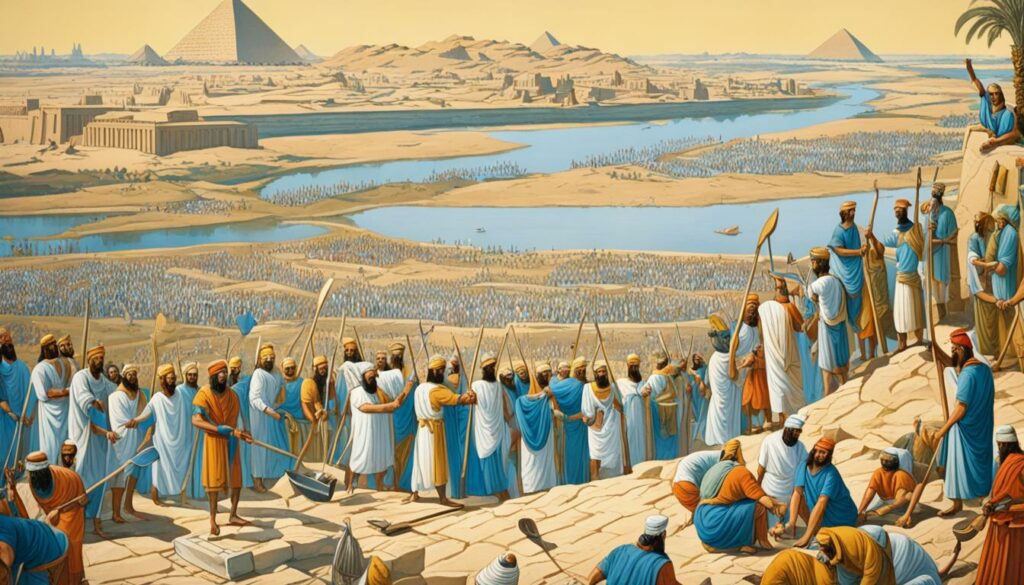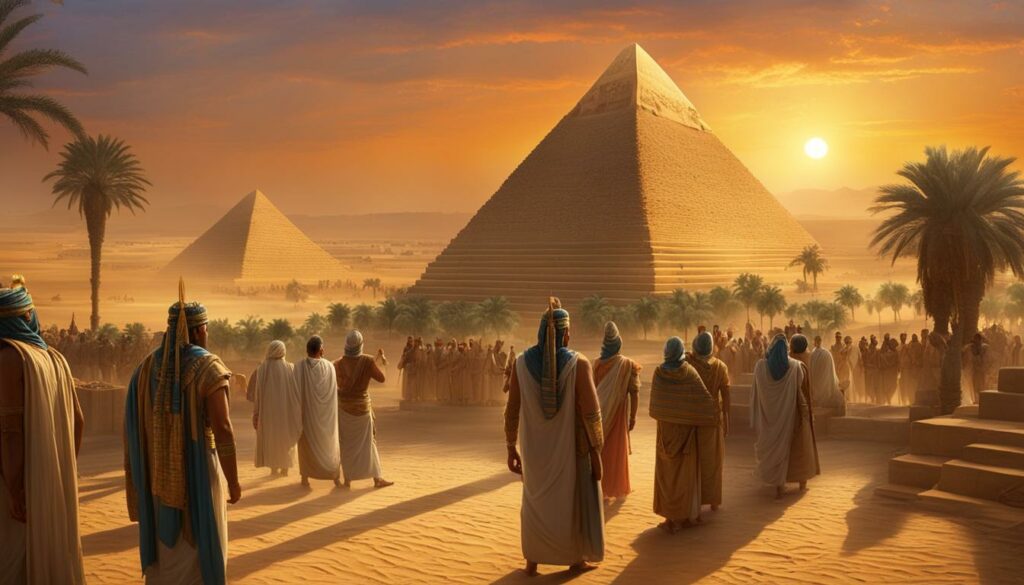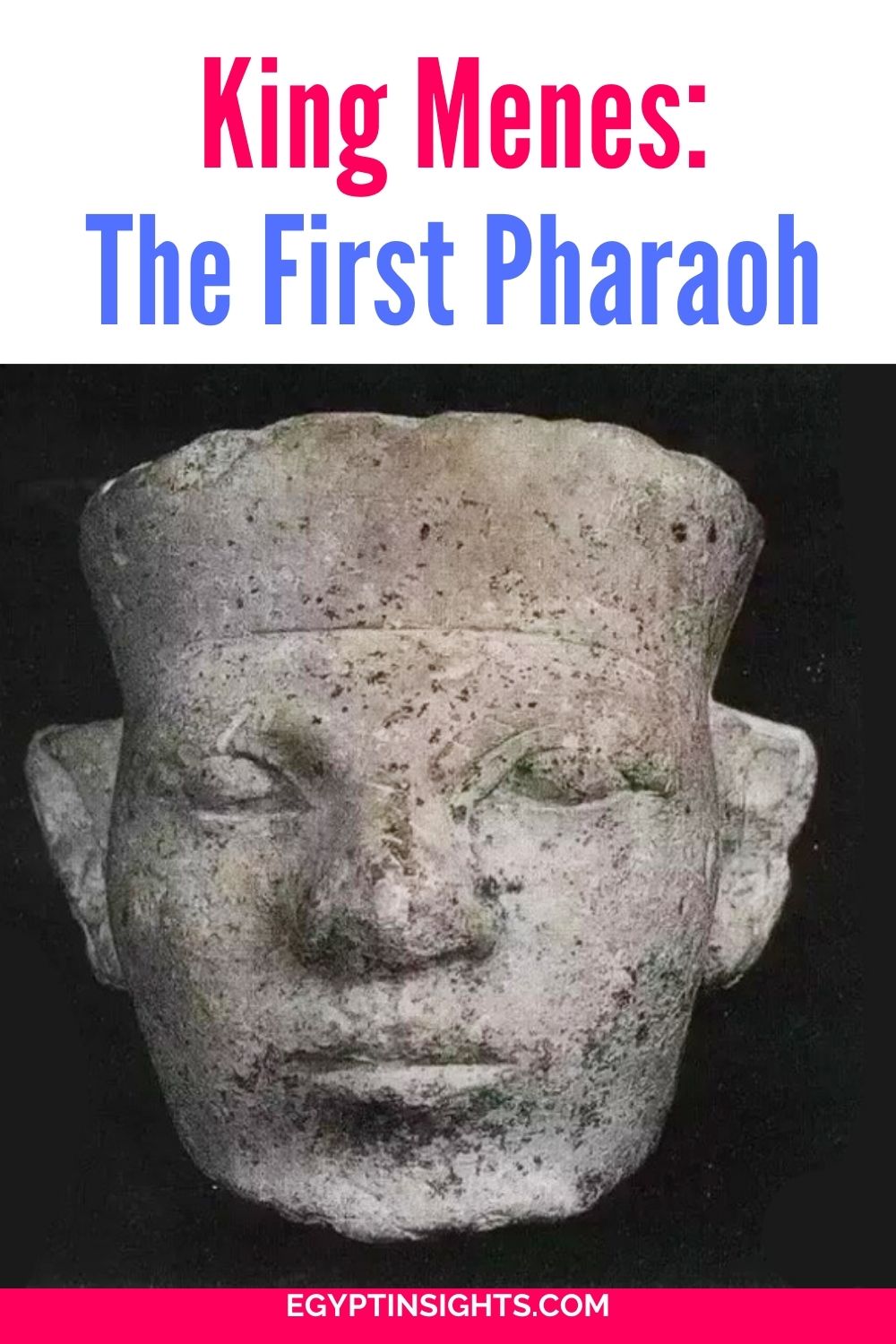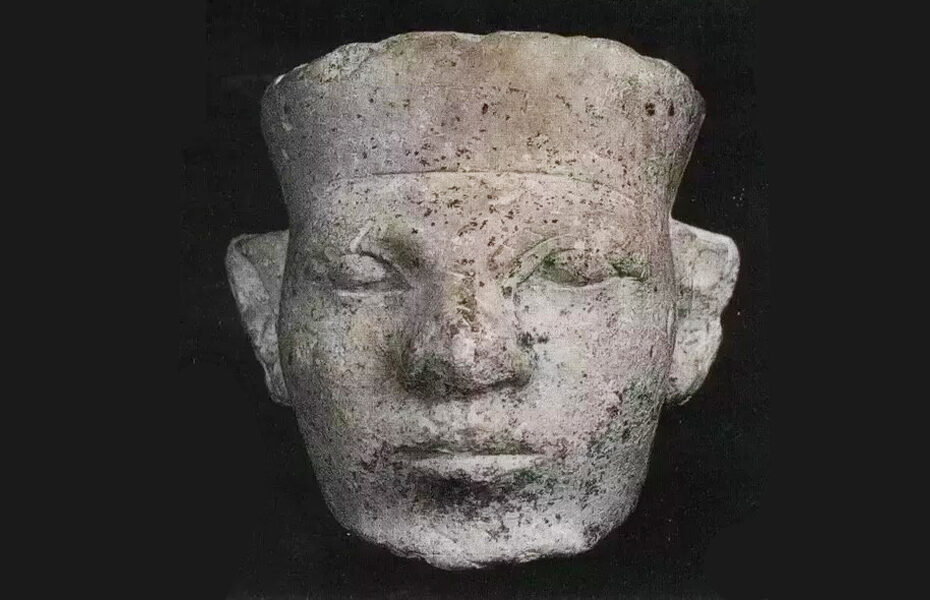King Menes is a legendary figure in ancient Egyptian history, credited with the unification of Upper and Lower Egypt and the establishment of the First Dynasty.
He is believed to have reigned around 3150 BCE, and his name appears in various sources such as Manetho’s Chronology and the Turin King List.
Although historians continue to debate Menes’s identity, he is widely regarded as the first king of a united Egypt.
According to tradition, King Menes unified Upper and Lower Egypt through military conquest, establishing a centralized monarchy for centuries.
He is also credited with founding the city of Memphis, which served as the capital of Egypt for much of its history. Menes was a significant figure in ancient Egyptian religion and mythology, and he was often depicted in art and literature as a divine ruler with close ties to the gods.
The legacy of King Menes and his role in the unification of ancient Egypt has been the subject of much scholarly inquiry over the centuries. While much of his life and reign remain shrouded in myth and legend, the impact of his achievements on the development of Egypt as a unified kingdom cannot be overstated.
Historical Context
Early Dynastic Period
King Menes is considered the legendary first pharaoh of unified Egypt. He is believed to have ruled during the Early Dynastic Period, which marked the beginning of the Old Kingdom of Egyptian Civilization.
The Early Dynastic Period lasted from around 3100 BCE to 2686 BCE and saw Egypt’s first centralized state’s emergence.
Ancient Egyptian Civilization
Ancient Egypt was one of the world’s most powerful and prosperous civilizations, known for its impressive architecture, art, and culture. It was a land of pharaohs, pyramids, and hieroglyphs.
Ancient Egyptian Civilization spanned over three thousand years, from around 3100 BCE to 30 BCE, and was divided into several periods, including the Old Kingdom, Middle Kingdom, and New Kingdom.
During the Early Dynastic Period, Egypt was divided into Upper and Lower Egypt, with each region having its ruler.
King Menes is credited with unifying Upper and Lower Egypt, establishing the first dynasty, and laying the foundation for the Old Kingdom.
The reign of King Menes marked the beginning of a new era in Egyptian history, which saw the rise of a powerful centralized state, the development of a complex bureaucracy, and the construction of impressive monuments such as the Step Pyramid of Djoser.
Menes and His Identity
Menes is considered the legendary first king of unified Egypt, credited with establishing ancient Egypt’s 1st dynasty. However, his identity is a subject of ongoing debate among historians.
Narmer and Meni
Some scholars have suggested that Menes was the same person as Narmer, who is credited with unifying Upper and Lower Egypt.
Narmer is depicted in several ancient artifacts, including the Narmer Palette. On the palette, he is shown wearing the crown of Upper Egypt on one side and Lower Egypt on the other. He is also shown smiting his enemies, a common motif in ancient Egyptian art.
Another theory suggests that Menes was known as Meni, mentioned in the Turin King List as the first pharaoh of the First Dynasty. According to this theory, Meni was a king of Thinis, a city in Upper Egypt, who conquered Lower Egypt and established the capital at Memphis.
Manetho’s Accounts
Manetho, a 3rd-century BCE Egyptian historian, called Menes the first king of Egypt and credited him with unifying Upper and Lower Egypt. Manetho also claimed that Menes ruled for 62 years and was succeeded by his son, Athothis.
Herodotus and Greek Historians
The 5th-century BCE Greek historian Herodotus referred to Menes as Min and credited him with building Memphis, the capital of Egypt. Herodotus also claimed that a hippopotamus killed Menes.
Other Greek historians, such as Diodorus Siculus and Strabo, also wrote about Menes and his accomplishments, including the unification of Upper and Lower Egypt.
Reign and Achievements
King Menes was the legendary first king of unified Egypt, credited with many achievements during his reign. Here are some of the most notable ones:
Unification of Upper and Lower Egypt
Menes is widely regarded as the king who united Upper and Lower Egypt into a single centralized monarchy. This achievement is considered a major milestone in ancient Egyptian history, as it brought together two regions that had been separated for centuries.
Some historians believe Menes accomplished this feat through military conquest, while others suggest he used diplomacy and other means to achieve his goal.
Foundation of Memphis
Another significant achievement of Menes was the foundation of Memphis, which became the capital of Egypt during his reign. This city was strategically located near the border between Upper and Lower Egypt, making it ideal for the new capital.
Memphis quickly became a center of trade, religion, and culture, and it remained an important city throughout ancient Egyptian history.
Development of Writing and Art
Menes is also credited with developing writing and art in ancient Egypt. He is believed to have commissioned many works of art and literature during his reign, including the famous Narmer Palette, which depicts the unification of Upper and Lower Egypt.
Menes is also believed to have introduced the hieroglyphic writing system, which became the primary communication method in ancient Egypt.

Cultural and Religious Impact
King Menes was pivotal in shaping ancient Egypt’s cultural and religious practices. During his reign, the gods and rituals of both Upper and Lower Egypt were integrated into the kingdom’s religious practices, ensuring a unified religious identity for the people.
Gods and Rituals
Under Menes, the pantheon of gods was expanded to include deities from Upper and Lower Egypt. The cults of Horus and Set, the patron gods of Upper and Lower Egypt, were merged to form a new cult representing the entire kingdom.
This amalgamation of gods was reflected in the construction of new temples and shrines, which incorporated elements of both Upper and Lower Egyptian religious traditions.
In addition to merging gods, Menes also established new religious rituals that reflected Egypt’s unified identity. One such ritual was the Sed festival, which celebrated the king’s continued reign and the renewal of his power.
This festival was held every thirty years and involved the construction of a new shrine for the king. The Sed festival became a crucial part of the religious calendar and was celebrated by subsequent pharaohs for centuries.
Temples and Festivals
Menes also oversaw the construction of new temples and festivals that reflected Egypt’s unified identity. The most notable of these was the city of Memphis, which became the capital of Egypt during Menes’ reign.
Memphis was the site of the largest temple complex in Egypt, dedicated to the god Ptah and his consort, Sekhmet. The temple complex symbolized Egypt’s unity and was a focal point for religious and cultural activities.
In addition to constructing new temples, Menes also established new festivals that celebrated Egypt’s unity. One such festival was the Heb Sed, held every three years to celebrate the king’s continued reign.
The festival involved various activities, including athletic competitions, military parades, and religious ceremonies. The Heb Sed became a crucial part of the religious and cultural calendar and was celebrated by subsequent pharaohs for centuries.
Economic and Administrative Policies
Trade and Agriculture
King Menes implemented several economic policies to boost trade and agriculture in Egypt. He recognized the importance of the Nile River in the country’s economy and initiated irrigation projects to increase agricultural output. These projects helped improve the quality of crops and increase their yield.
Administrative Measures
Menes was a strong administrator who implemented several measures to streamline the government and improve its efficiency. He divided Egypt into provinces and appointed governors to oversee them. These governors collected taxes, maintained law and order, and implemented the pharaoh’s policies.
The king also established a centralized bureaucracy to manage the state’s affairs. He appointed a chief minister to oversee the bureaucracy and ensure it functioned smoothly. Menes also created a system of laws to regulate citizens’ conduct and maintain social order.
Under Menes’ leadership, Egypt experienced a period of stability and prosperity. His economic and administrative policies helped to boost the country’s economy and improve the lives of its citizens.
Archaeological Evidence
Archaeological evidence is scarce for King Menes, but a few key sources provide insight into his reign and accomplishments.
Narmer Palette and Abydos King List
The Narmer Palette is a ceremonial object from the Early Dynastic Period that depicts the unification of Upper and Lower Egypt. It is believed that King Menes is represented on the palette, wearing the crowns of both regions.
The Abydos King List, which dates to Seti I’s reign in the New Kingdom, also lists Menes as the first king of Egypt and the founder of the First Dynasty.
Tombs and Seal Impressions
Archaeologists have uncovered several tombs from the Early Dynastic Period, but none have been definitively linked to King Menes. However, some seal impressions from Abydos and Saqqara bear his name and suggest that he had a significant presence in those regions.
Death and Succession
Menes’ Death and Legacy
The death of King Menes is shrouded in mystery, and there is no clear consensus on how he died. Some historians speculate that he died in battle, while others believe that he died of natural causes. Menes left behind a powerful legacy that would shape Egyptian history for centuries regardless of how he died.
Menes is often credited with founding Egypt’s First Dynasty and unifying Upper and Lower Egypt into a single kingdom. He is also believed to have established Memphis as his capital, which would become one of the most important cities in Egypt.
Successors and the First Dynasty
After Menes’ death, he was succeeded by his son, Hor-Aha, who continued his father’s legacy by ruling over a united Egypt. Hor-Aha was followed by a succession of pharaohs who would rule over the First Dynasty of Egypt, including Djer, Djet, and Merneith.
During this time, Egypt experienced stability and prosperity as the pharaohs worked to consolidate their power and establish a strong central government. They also oversaw the construction of several monumental structures, including the Step Pyramid of Djoser and the Great Sphinx of Giza.

Frequently Asked Questions
What are the significant accomplishments of the first pharaoh of Egypt?
King Menes, the first pharaoh of Egypt, is credited with unifying Upper and Lower Egypt, which led to the establishment of the first dynasty in ancient Egypt. He founded the city of Memphis, which became the capital of Egypt. He is also credited with building the first dam on the Nile River.
What is the historical significance of the Narmer Palette?
The Narmer Palette is a significant artifact in ancient Egyptian history. It depicts King Menes’s unification of Upper and Lower Egypt. It is believed to have been used in a ceremonial ceremony and is considered one of the earliest examples of Egyptian art.
How did the unification of Upper and Lower Egypt impact ancient Egyptian Civilization?
The unification of Upper and Lower Egypt under King Menes led to establishing a centralized government, which allowed for developing a complex social and economic system. It also led to the construction of monumental architecture, such as the pyramids, and the development of a unique religious and cultural identity.
What evidence is there for King Menes as a historical figure versus a mythical one?
While historians debate this, evidence suggests that King Menes was a historical figure. The Turin King List and the Palermo Stone both mention him as the first pharaoh of Egypt and archaeological evidence of his reign, such as the Narmer Palette, exists.
What are the familial relations of the first pharaoh of Egypt?
Limited information exists on King Menes’ familial relations. Some sources suggest that he was the son of the god Ptah, while others claim that he was the son of a king named Narmer.
How has the legacy of Egypt’s first ruler influenced modern understanding of ancient Egyptian history?
The legacy of King Menes has significantly impacted modern understanding of ancient Egyptian history. His unification of Upper and Lower Egypt laid the foundation for the development of one of the most influential civilizations in human history. His reign also marked the beginning of the pharaonic era, which lasted over 3,000 years and left a lasting legacy.

